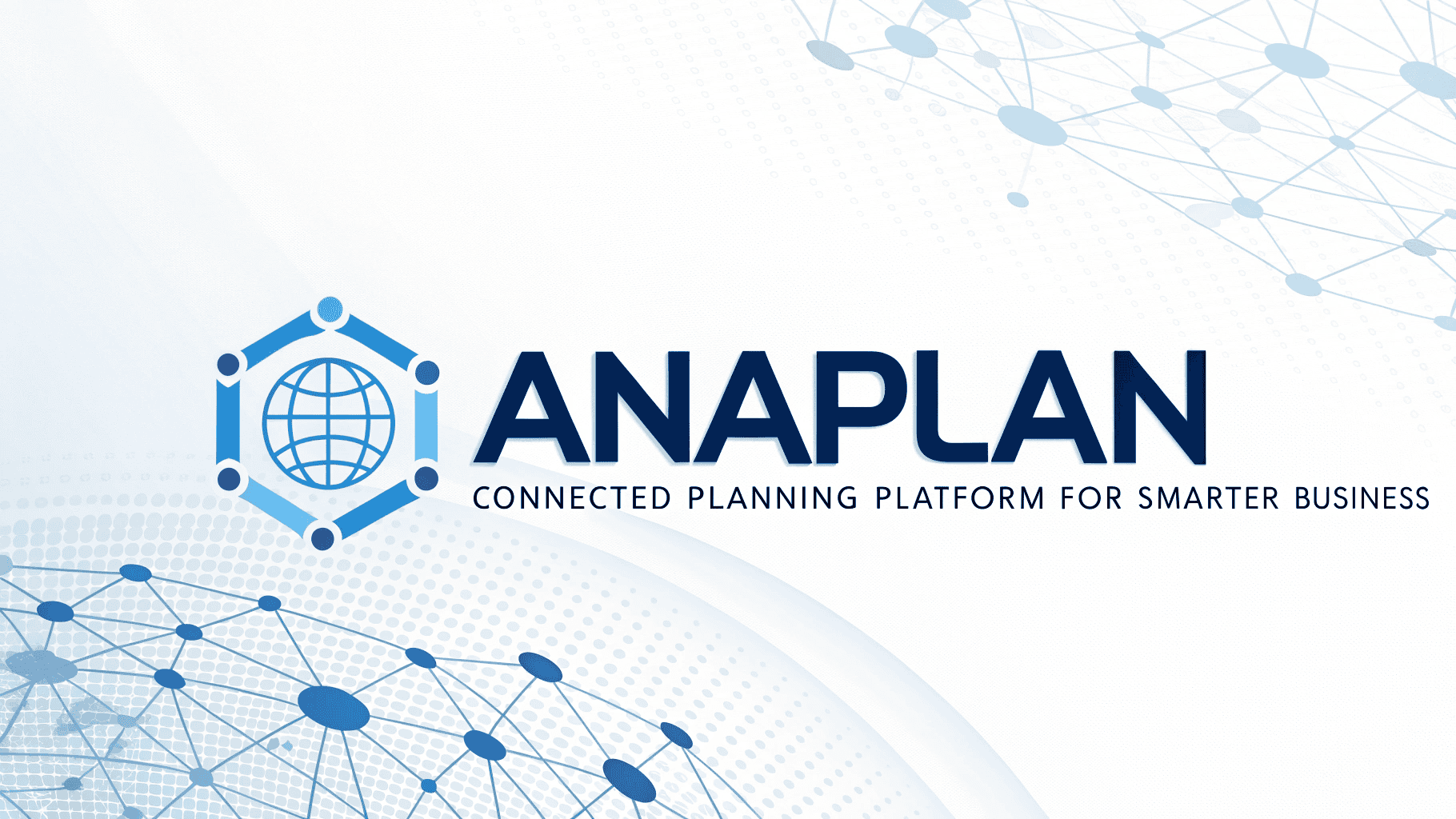
Modern businesses operate in an environment of constant change, where traditional planning approaches struggle to keep pace with market dynamics. Siloed planning processes, disconnected data sources, and rigid spreadsheet-based models create blind spots that can derail even the most carefully crafted strategies. This is where connected planning platforms like Anaplan are transforming how organisations approach business planning and decision-making.
Anaplan offers a cloud-based platform that connects planning processes across departments, enabling real-time collaboration and scenario modelling. Unlike traditional planning tools that operate in isolation, Anaplan creates a unified view of business performance, allowing teams to understand how changes in one area impact the entire organisation.
This comprehensive guide examines Anaplan’s capabilities, implementation considerations, and real-world applications to help you understand whether this platform aligns with your organisation’s planning needs. We’ll explore how connected planning differs from traditional approaches and why leading companies are making this transition.
What is Anaplan?
Anaplan is a cloud-based connected planning platform that enables organisations to model complex business scenarios and collaborate on planning processes in real-time. The platform combines powerful calculation engines with intuitive interfaces, allowing both technical and non-technical users to participate in planning activities.
At its core, Anaplan operates on a multidimensional database architecture that can handle massive datasets whilst maintaining calculation speed. This technical foundation supports sophisticated modelling capabilities, from financial planning and budgeting to supply chain optimisation and workforce planning.
The platform’s connected approach means that changes made in one planning area automatically flow through to related processes. For example, adjusting sales forecasts immediately impacts production planning, inventory requirements, and financial projections, providing stakeholders with a comprehensive view of the implications.
Key Platform Capabilities
Financial Planning and Analysis
Anaplan excels at streamlining financial planning processes that traditionally consume significant time and resources. The platform supports everything from annual budgeting cycles to rolling forecasts and scenario planning.
Financial planning features include:
- Dynamic budgeting and forecasting with driver-based models
- Multi-currency consolidation and reporting
- Variance analysis and exception reporting
- Capital expenditure planning and approval workflows
- Integrated profit and loss, balance sheet, and cash flow modelling
Sales Performance Management
The platform provides comprehensive tools for managing sales territories, quotas, and incentive compensation. Sales teams can model different scenarios to optimise territory coverage and quota allocation.
Sales planning capabilities encompass:
- Territory design and quota allocation
- Sales capacity planning and hiring models
- Commission and incentive compensation management
- Pipeline forecasting and conversion analysis
- Sales and operations planning integration
Supply Chain Planning
Anaplan’s supply chain capabilities help organisations optimise inventory levels, production schedules, and distribution networks. The platform can model complex supply chain scenarios to identify potential disruptions and optimisation opportunities.
Supply chain features include:
- Demand planning and forecasting
- Inventory optimisation across multiple locations
- Production planning and capacity management
- Supplier performance tracking and risk assessment
- Distribution network optimisation
Workforce Planning
Human resources teams use Anaplan to model workforce requirements, plan hiring activities, and analyse compensation trends. The platform connects workforce planning with business strategy and financial constraints.
Workforce planning tools cover:
- Headcount planning and organisational design
- Compensation planning and merit increase modelling
- Skills gap analysis and training needs assessment
- Succession planning and talent pipeline management
- Workforce cost modelling and budget allocation
Connected Planning Benefits
Real-Time Collaboration
Traditional planning processes often involve multiple rounds of spreadsheet exchanges and lengthy consolidation periods. Anaplan enables simultaneous collaboration, with stakeholders working on the same models in real-time.
This collaborative approach reduces planning cycle times whilst improving accuracy and buy-in from participating teams. Version control issues disappear as everyone works from the same source of truth.
Scenario Modelling
The platform’s calculation engine enables rapid scenario analysis, allowing planners to model multiple “what-if” situations and understand their implications across the business.
Users can create scenarios for various market conditions, operational changes, or strategic initiatives. These scenarios help leadership teams understand potential outcomes and make more informed decisions.
Integrated Planning Processes
Rather than planning in silos, Anaplan connects related planning activities. Sales forecasts inform production planning, which impacts procurement requirements and financial projections.
This integration eliminates inconsistencies between departmental plans and provides a holistic view of business performance. Changes cascade through connected models, ensuring all stakeholders understand the broader implications.
Scalability and Performance
Cloud-based architecture ensures the platform can handle large datasets and complex calculations without performance degradation. As organisations grow, Anaplan scales to accommodate increased data volumes and user requirements.
The platform’s memory-based calculations provide rapid response times, even with models containing millions of data points and complex interdependencies.
Implementation Considerations
Platform Architecture
Anaplan’s model-building approach requires careful consideration of data structure and calculation logic. Successful implementations typically involve experienced consultants who understand platform best practices.
Key architectural decisions include:
- Dimensional design and hierarchy structures
- Data integration patterns and update frequencies
- Security models and user access controls
- Performance optimisation strategies
- Model governance and change management processes
Data Integration
Connecting Anaplan to existing systems requires robust integration capabilities. The platform supports various connection methods, from real-time APIs to scheduled data imports.
Integration considerations encompass:
- Source system connectivity and data quality
- Master data management and synchronisation
- Error handling and exception processing
- Security and compliance requirements
- Performance impact on source systems
User Adoption
Anaplan’s flexibility can be both an advantage and a challenge. Whilst the platform supports sophisticated modelling, it requires users to understand model structure and calculation logic.
Adoption factors include:
- Training programmes for different user types
- Change management and communication strategies
- Model documentation and user guides
- Ongoing support and help desk capabilities
- Success metrics and user feedback mechanisms
Industry Applications
Technology Companies
Technology organisations use Anaplan for subscription revenue planning, product lifecycle management, and R&D investment prioritisation. The platform’s scenario modelling capabilities support strategic planning in rapidly changing markets.
Financial Services
Banks and insurance companies leverage Anaplan for regulatory capital planning, risk management, and profitability analysis. The platform’s calculation capabilities handle complex financial models and regulatory requirements.
Manufacturing
Manufacturing companies use Anaplan for production planning, inventory optimisation, and supplier management. Integration with ERP systems provides real-time visibility into operations and supply chain performance.
Retail and Consumer Goods
Retail organisations employ Anaplan for merchandise planning, store operations, and promotional analysis. The platform helps optimise inventory levels whilst managing seasonal demand variations.
Competitive Landscape
Anaplan competes with various planning solutions, from traditional enterprise resource planning systems to specialised planning tools. Key differentiators include the platform’s connected approach and model-building flexibility.
Compared to spreadsheet-based planning, Anaplan offers superior collaboration, version control, and scalability. Against traditional planning tools, the platform provides greater flexibility and faster implementation timelines.
Alternative solutions include Oracle Hyperion, IBM Planning Analytics, and Workday Adaptive Planning. Each platform has specific strengths, making vendor selection dependent on organisational requirements and technical constraints.
Pricing and Total Cost of Ownership
Anaplan follows a subscription-based pricing model with costs based on user types and platform usage. Pricing tiers accommodate different organisational sizes and requirements.
Cost considerations include:
- User licensing fees based on role and usage patterns
- Implementation and consulting services
- Training and change management support
- Ongoing maintenance and platform updates
- Integration development and system connectivity
Organisations should evaluate total cost of ownership beyond licensing fees, including internal resources required for model development and maintenance.
Making the Connected Planning Decision
Connected planning represents a fundamental shift from traditional planning approaches. Organisations considering Anaplan should evaluate both technical capabilities and organisational readiness for this transformation.
Key evaluation criteria include:
- Planning complexity and cross-functional dependencies
- Current planning cycle times and accuracy challenges
- Stakeholder collaboration requirements
- Data integration capabilities and system landscape
- Change management capacity and user adoption factors
The platform suits organisations with complex planning requirements, multiple stakeholders, and significant interdependencies between planning processes. Companies with simple planning needs or limited implementation resources may find traditional tools more appropriate.
Transforming Planning for Future Success
Connected planning platforms like Anaplan are redefining how organisations approach business planning and decision-making. By breaking down silos and enabling real-time collaboration, these platforms provide the agility and insight needed to navigate uncertain business environments.
The transition from traditional planning to connected planning requires careful consideration of technical requirements, organisational change, and implementation resources. However, organisations that successfully make this transition often find significant improvements in planning accuracy, cycle times, and strategic decision-making capabilities.
As business environments become increasingly complex and fast-moving, connected planning platforms will likely become essential tools for maintaining competitive advantage. Anaplan’s comprehensive capabilities and proven track record position it as a leading solution for organisations ready to transform their planning processes.

